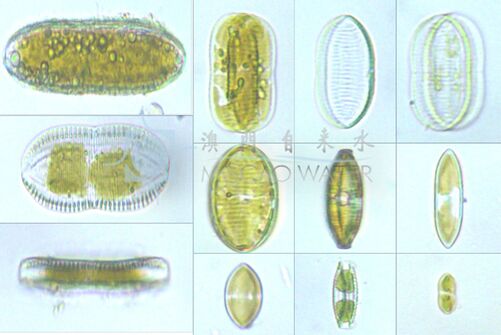Tryblionella
硅藻門 Bacillariophyta
硅藻綱 Bacillariophyceae
硅藻目 Bacillariales
硅藻科 Bacillariaceae
盤形藻屬 Tryblionella W. Smith, 1853
描述:Cells solitary, usually lying in valve view.a, b Frustules diagonally symmetrical about the median valvar plane (‘nitzschioid’ symmetry). Two plastids, one on either side of the median transapical plane. A fairly large epipelic genus, widespread but not often common in brackish and marine sediments; also present in high-conductivity fresh waters.
Valves robust, broad; elliptical, linear or panduriform, with bluntly rounded or apiculate poles. Valve face often bearing warts or ridges externally,c, e undulate,c bounded on one side by the keeled raphe system; on the other side often bearing a marginal ridge at its junction with the extremely shallow distal mantle.f, h, k Striae uniseriate to multiseriate,e, g usually interrupted by one or more sterna,d, g and containing small round poroids occluded by hymenes; rarely, alveolate (cf. Pinnularia). Raphe system strongly eccentric, keeled, fibulate.g, l Central external raphe endings close together,i slightly expanded or deflected; occasionally absent. Internal fissures ending centrally in a double helictoglossa. Terminal fissures short, deflected.h Fibulae squat,g, l often as broad or broader apically than transapically, sometimes striate like the valvel and then sometimes hollow. Girdle narrow, containing plain or sparsely porous, open bands.k
Closely related to Psammodictyon and Nitzschia. Difficult to define monothetically but nevertheless a natural cluster, including most species
traditionally placed in Nitzschia sects. Tryblionella, Circumsutae, Apiculatae and Pseudotryblionella. Common diagnostic combinations are: massive apically elongate fibulae, high marginal ridge, uniseriate striae interrupted by one or two sterna, tiny poroids; or small, stubby fibulae, low marginal ridge,
